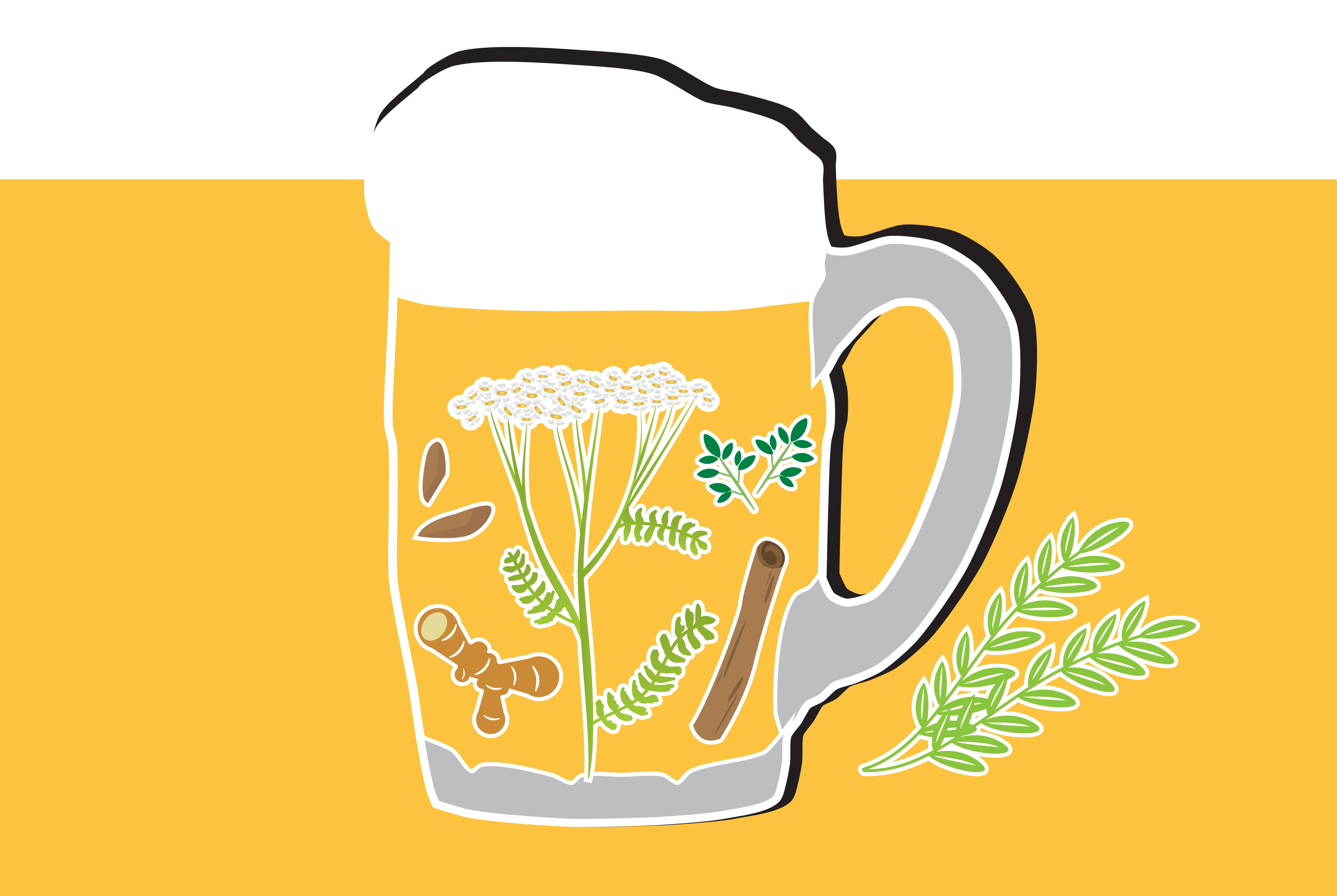Shop
What’s a Gruit Ale?
What is a beer without hops?
Picture a woodsman trekking through the forests of southwestern Germany. He’s sporting a burly beard and toting a wooden chalice filled with beer. He turns, in the rain, and plucks a twig off the tree next to him. Then he grabs a few gooseberries. Then spruce needles. He takes these back to his camp and uses them to make a fermented beverage. Pleased, he takes a sip and grunts to himself, “Das Gruit.”
Don’t quote me on it, but I think that sounds a lot like “that’s great.”
It’s true: before hops were regularly used, gruit — a mixture of herbs including sweet gale, mugwort, yarrow, ground ivy, horehound, and heather — was the preferred way to add flavor and bitterness to beer. All of the herbs sound rather earthy, and that’s because they are.
Even more ancient gruit brews were made with pine, spruce, and seaweed, which created a high ABV, herbal tea-like brew.
In the sixteenth century, gruit brews were replaced by hopped ones as a result of the Protestant Reformation. Protestants, during their division from the Catholic Church, attempted to pull revenue away from the Catholic Church by utilizing different brewing materials than the Catholic Church-monopolized gruit. Hops became the alternative and have remained the more popular method.
Opinions differ on preference, but there is something beautiful about the complexity of gruit brews. For instance, one modern reincarnation of the gruit brew is Dogfish Head’s Kvasir. It boasts a recipe “developed with the help of chemical, botanical and pollen evidence taken from a 3,500‐year‐old Danish drinking vessel.”
Dogfish Head claims that vessel was “made of birch bark [and was] found in the tomb of a leather‐clad woman.” The gruit it held was brewed with “wheat, lingonberries, cranberries, myrica gale, yarrow, honey and birch syrup.”



